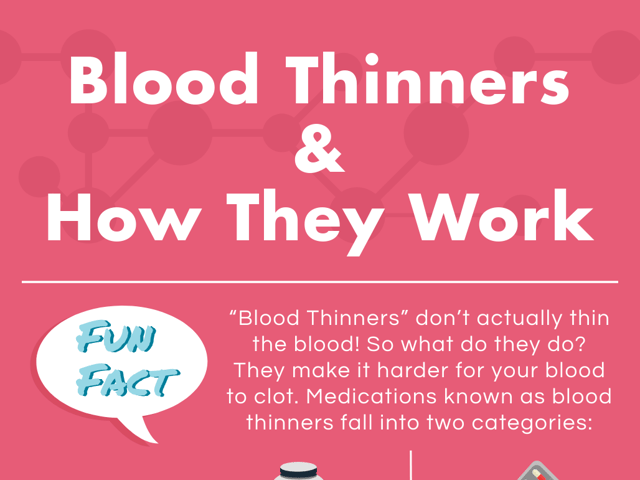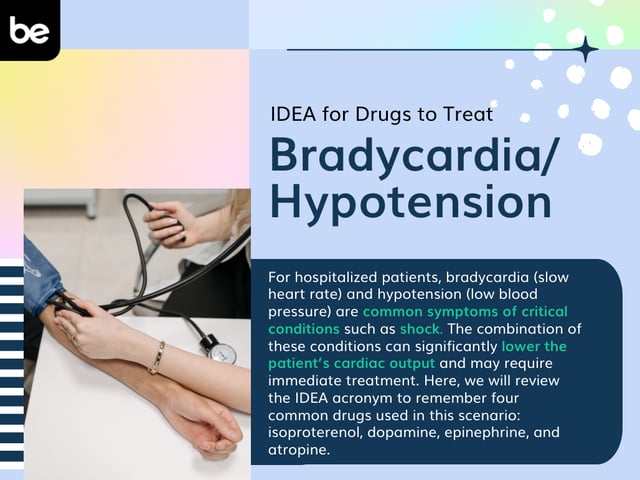
Blood Thinners and How They Work
Fun fact—“Blood Thinners” don’t actually thin the blood! So what do they do? They make it harder for your blood to clot. Medications known as blood thinners fall into two categories: anticoagulants and antiplatelet drugs.
Anticoagulants
One of the most common anticoagulants is Warfarin (Coumadin). Warfarin blocks an enzyme that uses Vitamin K to make key clotting factors and removes Vitamin K from the liver. Another common anticoagulant is Heparin, which inactivates the clotting factors thrombin and fibrin. Patients on anticoagulants need to be monitored for the obvious risk of bleeding. The reversal drug for Warfarin is Vitamin K, and the reversal drug for Heparin is Protamine Sulfate. There are new anticoagulant medications for outpatient use that have been commercialized, such as Xarelto and Pradaxa, but of note, there is no reversal drug in the event of overdose or bleeding.
Antiplatelet Drugs
Antiplatelet drugs, or platelet aggregation inhibitors, make it more difficult for platelets to stick to each other and form a clot by prohibiting thromboxane. Clopidogrel (Plavix) is a very commonly prescribed antiplatelet drug, but over-the-counter Aspirin is also in this category. The antidote for these medications, if needed, is the infusion of platelets.
Keep in mind that blood thinners are not an effective treatment for an existing clot and only prevent a future clot from forming. For an existing clot, the patient will likely need the clot-busting drug known as TPA (Tissue Plasminogen Activator) or Alteplase.

Keep Reading

National Council Licensure Examination-Registered Nurse Blog
What to Expect in Nursing School Clinicals
The clinical experience is a rite of passage for all nursing students, …

National Council Licensure Examination-Registered Nurse Blog
What is the NCLEX Next Generation (NGN) Exam?
If you’re interested in becoming a registered nurse, you likely know th…

National Council Licensure Examination-Registered Nurse Blog
IDEA for Drugs to Treat Bradycardia/Hypotension
For hospitalized patients, bradycardia (slow heart rate) and hypotensio…